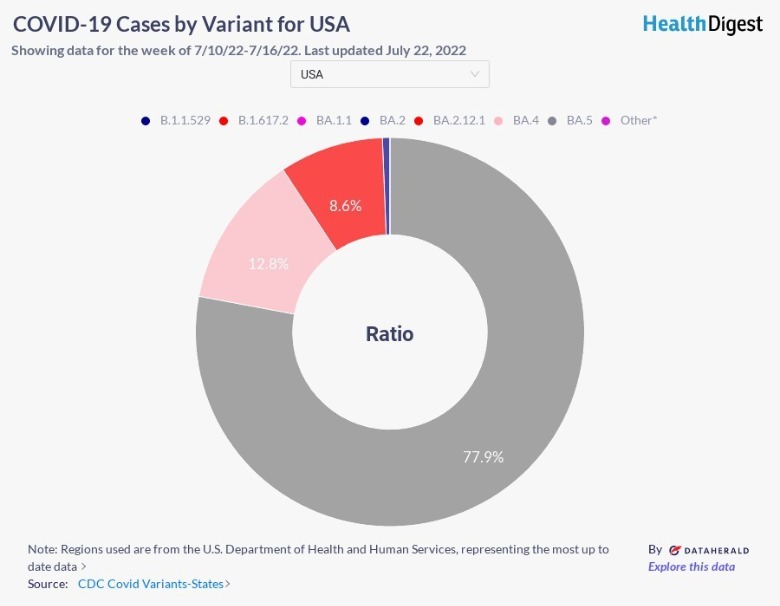The COVID-19 Strain With The Most Cases In The US According To Data
COVID-19 has reportedly made its way to nearly every country or territory in the world. By December 2021, only a dozen countries and territories have not reported any cases of COVID-19, as per U.S. News & World Report. Today, that number has dwindled even further. According to the World Health Organization, only four countries — Saint Helena, Tokelau, Turkmenistan, and the Democratic People's Republic of Korea, also known as North Korea (via U.S. Department of State) — have not reported any cases or any deaths from COVID-19. However, in May 2022, North Korea divulged details of its first outbreak (per Public Broadcasting Service).
In the U.S. alone, there have been approximately 93 million cases of COVID-19 and over 600 million vaccines given — mind you there are multiple series of vaccines (per Centers for Disease Control and Prevention). Back in late December of 2020, the number of COVID-19 cases was reportedly at about 19 million (per the Center for Infectious Disease Research and Policy). Since then, highly transmissible strains of the virus have spread rapidly throughout the world. For example, the Delta strain was first reported in the U.S. in March 2021 (per ABC News). Later in November 2021, another strain, Omicron, was detected (per Centers for Disease Control and Prevention). Experts have debated which of the many strains would have the most number of cases (per U.S. News & World Report). Well, the results are in for the U.S., and the top strain may surprise you.
COVID-19 strains have different case rates in the United States
Different strains of the COVID-19 virus have different case rates in the U.S. Two lineages of the Omicron strain, B.1.1.529 and BA.1.1, and one lineage of the Delta strain, B.1.617.2 — accounted for the least amount of cases of COVID-19. All three registered 0.0% of cases between the weeks of July 10, 2022 and July 16, 2022. On the other hand, four different types of Omicron — BA.2, BA.2.12.1, BA.4, and BA.5 — led the U.S. in COVID-19 cases for the aforementioned week. BA.5 topped the list with 77.9%, followed by BA.4 at 12.8%. BA.2.12.1 was next on the list at 8.6%, and lastly, BA.2 at 0.62%. All other strains of COVID-19 accounted for 0.003% of cases during that same week.
Omicron strains spread easily, but are often less severe, according to the Centers for Disease Control and Prevention. Vaccines, boosters, masks, frequent testing, and some monoclonal antibodies are still being used as preventatives against the virus. Notably, the BA.4 and BA.5 substrains may be more resistant to current vaccines.


